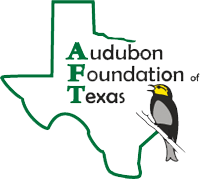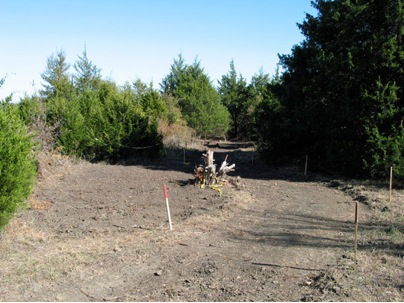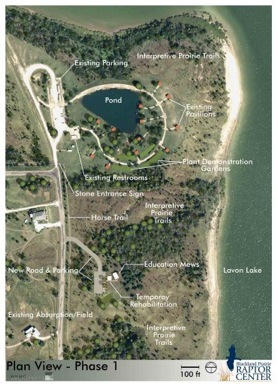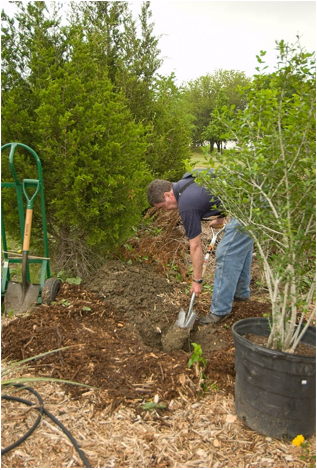
"Encouraging conservation
through education and research"
Audubon Foundation of Texas
510 S. Congress, Ste 102
Austin, Texas 78704
512-327-1551
Making Texas better by encouraging conservation through education, research, and citizen involvement programs for Texas' birds, wildlife and habitat. AFT supports Audubon Texas, Audubon Chapters, and sanctuaries statewide
Prairie and Timbers Audubon Society
2008 Collaborative Grant for
habitat improvement at Raptor Center
510 S. Congress, Ste 102
Austin, Texas 78704
512-327-1551
First, the trail and beds were cleared and marked. Two troops of Boy Scouts on separate weekends volunteered help. The first troop removed the cedar trees which were cut down and the stumps that were left. The second troop turned the beds to remove any additional roots which would have impeded rototilling.
The next step was to rototill in about 1 inch of compost along with dry molasses at about 20 pounds per 1000 sq.ft. The beds as laid out total just over 1,100 sq.ft. A layer of 2-3 inches of hardwood mulch was then be used to cover the beds to prevent airborne weed seeds from contacting the ground and germinating over the winter. The mulch also helps conserve the need for water during the summer months. Planting Completed to Finish Native Garden As planned after mid-March, with little chance of another hard freeze, planting was done. On April 4, Jerri Kerr, David Griffith and Marget Jesness met with three Master Naturalists at Brockdale Park to plant various shrubs. The beds looked really great with only a few weeds in the largest bed. And, there were worms! In all, we planted 32 perennials in one gallon containers and 9 plants in larger containers. David and Marget had spent the afternoon of Friday, April 3, at Shades of Green purchasing the stock. As luck would have it, they did not have some of the plants on our list as they needed warmer weather
Jerri Kerr laid out the location of the various plants in the five beds, three of which get mostly full sun and two which are mostly shaded. We were joined by three other volunteers, all Master Naturalists of which two were on the BPRC Committee. The nine big plants included two Yaupon Hollies and two Wax Myrtles in 15 gallon containers. Missing were two Possumhaw Hollies as they were budget busters that were only available in 30 gallon containers. Later, on April 29, we were able to purchase two Possumhaws in 15 gallon containers which had been left over from the Native Plant sale the previous weekend at the Heard Museum. They cost only 1/5th what we would have spent on the 30 gallon Possumhaws. Besides the Yaupons, Possumhaws and Wax Myrtles, we also purchased five Red Yuccas. The perennials included Black and Blue Salvias, Chili Pequines, Flame Acanthus, White Garra, Greg’s Blue Mist, Pigeonberry, Pink Autumn Sages, Red Autumn Sages, Texas Lantanas, Turk’s Caps and Zexmanias. Most of the planting went very quickly. The size of the hole for the perennials in their 1 gallon containers did not require much digging in the beds which had been roto-tilled at the end of January.
We just shoved the mulch to the side, used a hand trowel to dig a hole about 5 inches in diameter and 4 inches deep, then stuck the plant in the hole after roughing up the roots. The object was to plant the shrub on the high side and fill the volume around the roots with the dirt which had been dug out. That fill dirt was brought up level to the top of the roots. Finally, the mulch was then replaced. In all, it took less than 2 minutes per plant with the biggest amount of time being spent on removing the plant from the container. Of course, the large plants required a lot more work digging a bigger hole. It took as long to plant them as all of the perennials. The good news is that all of the plants have survived and are doing well. We did have some of the plants partially eaten by, most likely, rabbits, but they are still going. Please see webpage at http://prairieandtimbers.org/ |



